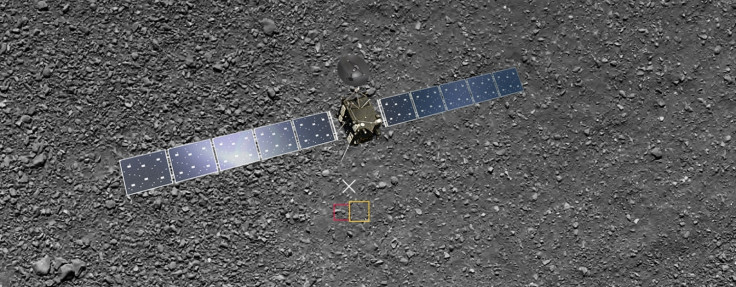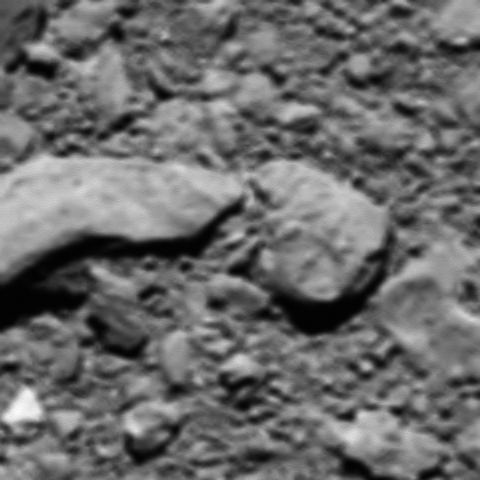Rosetta's final surprise: ESA unveils space probe's last, hidden image of comet 67P
The probe ended its mission last year with a death dive on to the comet's surface.

The European Space Agency (ESA) has unveiled one last surprise – a hidden image – from Rosetta, the space probe it sent to conduct detail studies of comet 67P/Churyumov–Gerasimenko (67P).
The probe, which ended its 12-year mission on 30 September 2016, transmitted scientific data and a blurry image of the comet's surface before colliding on its surface. But, seems like that wasn't the last snap it managed to transmit.
According to scientists at the ESA, Rosetta had a surprise in store, a close-up image of the comet's surface, which they were able to reconstruct using the last set of data sent back to the Earth. The information, according to the agency, was interrupted but was enough to recreate one not-so-detailed look of the probe's touchdown site, dubbed Sias.
The hidden image was sent back in the form of fragments, but it was only over half of the total data required by the automatic image processing software used by the agency. It could not recompile those fragments.
However, during a recent manual reassessment of the data, ESA's camera team found they could actually use that incomplete data to create one last coherent image of the comet.
"The last complete image transmitted from Rosetta was the final one that we saw arriving back on Earth in one piece moments before the touchdown at Sais," says Holger Sierks, principal investigator for the OSIRIS camera at the Max Planck Institute for Solar System Research. "Later, we found a few telemetry packets on our server and thought, wow, that could be another image."

According to a Gizmodo report, 67P's last image was taken from a height of about 60ft, covering nearly 10-square-foot (one-square-meter) of the comet's surface.
Rosetta arrived at 67P 10 years after launching from Earth in 2004. The space probe performed a detailed study of the comet, teaching us about its shape, composition, and behaviour. But, due to diminishing solar power, scientists decided to end the decade-long journey by assigning Rosetta a suicide mission -- crash-landing on the comet's surface.
© Copyright IBTimes 2025. All rights reserved.





















